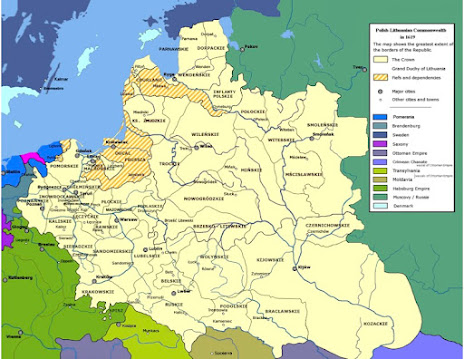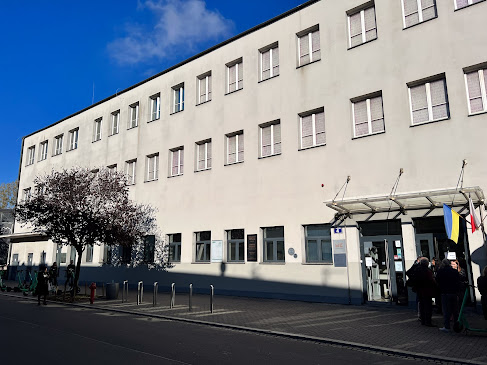Our final stops in Poland, and for the 2022 trip, were the Baltic cities of Gdansk and nearby Gdynia. See map on previous post. Gdansk is only 78 miles to the Russian border of Kaliningrad, a non-contiguous part of Russia on the Baltic between Poland and Lithuania. Because of Poland's proximity, history of being partitioned by Russia in the 1700s, and then invaded by Russia in 1939, there is great antipathy toward their eastern behemoth.
I'm sure those politically aware during the 80s remember the end of Soviet Union began in Gdansk when employees in the Lenin Shipyard created the workers union Solidarnosc, or Solidarity. Solidarnosc was a broad anti-authoritarian social movement, using civil resistance to advance worker's rights and social change. In 1981, one year after its founding, the union represented 30% of all working age Poles. Lech Walesa, leader of Solidarnosc and eventually President of Poland, said Pope John Paul II and his 1979 visit to Poland was significant factor in creating the movement. The Pope was beyond the reach of the Communist regime and is considered by many world leaders to be one of the main causes of the downfall of Communism. A factor that Polish citizenry remains loyal to the church.
Gdansk is a charming city which we enjoyed as much as Krakow. However unlike Krakow, and more like Warsaw, it was significantly destroyed during WWII and its historic center completely rebuilt.
Along the waterway it can feel like Amsterdam with its rebuilt historic port buildings for loading and unloading ships. Being a workers town, there were many Guilds to support and influence for the seaman and longshoremen.
While the shipyards are still there, the area is being gentrified with the centerpiece being a fabulous new museum to Solidarnosc. The museum is made from Corten steel that purposely rusts, but only up to a point and then protects the steel from further rusting. Very appropriate material for a shipyard.
In addition to the Solidarnosc museum there is an excellent WWII museum. However, unlike western Europe and American WWII museums which briefly summarize the war as: Germany invades Poland, Britain and France declare war, Japan bombs Pearl Harbor, America enters the war, Allied troops land on Normandy, set back at Battle of the Bulge, WE WIN! the Gdansk museum took us five hours to go through - quickly, and only the last 20 minutes covered the West's involvement. So much took place on the eastern front with so many sacrifices the west barely recognizes.
We took a day trip to Gdynia about a half hour train ride NW of Gdansk to visit a friend's son and his wife. In the late 70s my then girlfriend worked at a landscape company and met their landscape architect, Sandy. Her husband David was from a Wisconsin farm family. Our shared midwest heritage and mutual love of adventure we became good friends and did a fair amount of climbing together, both on our own and through the Mountaineers. Sandy was from New England and before I left for graduate school in 1980 they moved to an island off of Bath Iron works in Maine. There they bought an 80 acre property with a 1726 unaltered saltbox house - the first non-family owner. David became one of the town's leading attorneys and Sandy maintained a landscape design firm, raised sheep and was a community activist. Despite the cross-country distance we've kept in continual contact since then. I always enjoy my visits to their special place. Beautiful, if harsh winters.
But I digress. Sandy and David's first child Ian studied Architecture where he met his wife Zosia from Poland. After graduating, they wanted to live more responsibly and built their own home and learned about sustainable farming in Maine. They eventually moved to Gdynia in her home country where Ian went back to his dad's farming family roots while Zosia owns and runs a deli based on their sustainable products. Though we'd never met as adults, the lovely couple treated us like old time family friends, showing us their city and having a delightful lunch.
Our last day in Gdansk we discovered an Amber museum. The Baltic is known for its amber, and Poland is the largest developer of the resource. Amber was formed 45 million years ago when forests suffered catastrophic events and were buried. The Greeks and Romans used to import it for their jewelry and developed the Amber Road from the Baltics to the Mediterranean. It is the national stone of Poland.






























































